Modeling Collapse and Accretion in Turbulent Gas Clouds: Implementation and Comparison of Sink Particles in AMR and SPH
Abstract
Star formation is such a complex process that accurate numerical tools are needed to quantitatively examine the mass distribution and accretion of fragments in collapsing, turbulent, magnetized gas clouds. To enable a numerical treatment of this regime, we implemented sink particles in the adaptive mesh refinement (AMR) hydrodynamics code FLASH. Sink particles are created in regions of local gravitational collapse, and their trajectories and accretion can be followed over many dynamical times. We perform a series of tests including the time integration of circular and elliptical orbits, the collapse of a Bonnor-Ebert sphere and a rotating, fragmenting cloud core. We compare the collapse of a highly unstable singular isothermal sphere to the theory by Shu, and show that the sink particle accretion rate is in excellent agreement with the theoretical prediction. To model eccentric orbits and close encounters of sink particles accurately, we show that a very small timestep is often required, for which we implemented subcycling of the N-body system. We emphasize that a density threshold for sink particle creation alone is insufficient for supersonic flows, if the density threshold is below the opacity limit. The density can exceed the threshold in strong shocks that do not necessarily lead to local collapse. Additional checks for bound state, gravitational potential minimum, Jeans instability and converging flows are absolutely necessary for a meaningful creation of sink particles. We apply our new sink particle module for FLASH to the formation of a stellar cluster, and compare to a smoothed particle hydrodynamics (SPH) code with sink particles. Our comparison shows encouraging agreement of gas properties, indicated by column density distributions and radial profiles, and of sink particle formation times and positions. We find excellent agreement in the number of sink particles formed, and in their accretion and mass distributions.
Authors: Federrath, C.; Banerjee, R.; Clark, P. C.; Klessen, R. S., 2010, ApJ, 713, 269 [ ADS link ]
FLASH versus SPH comparison
The movie shows the formation of a star cluster from turbulent initial conditions. We find encouraging agreement between the adaptive mesh refinement code FLASH and a standard smoothed particle hydrodynamics code with sink particles. [ 3MB mp4 ]
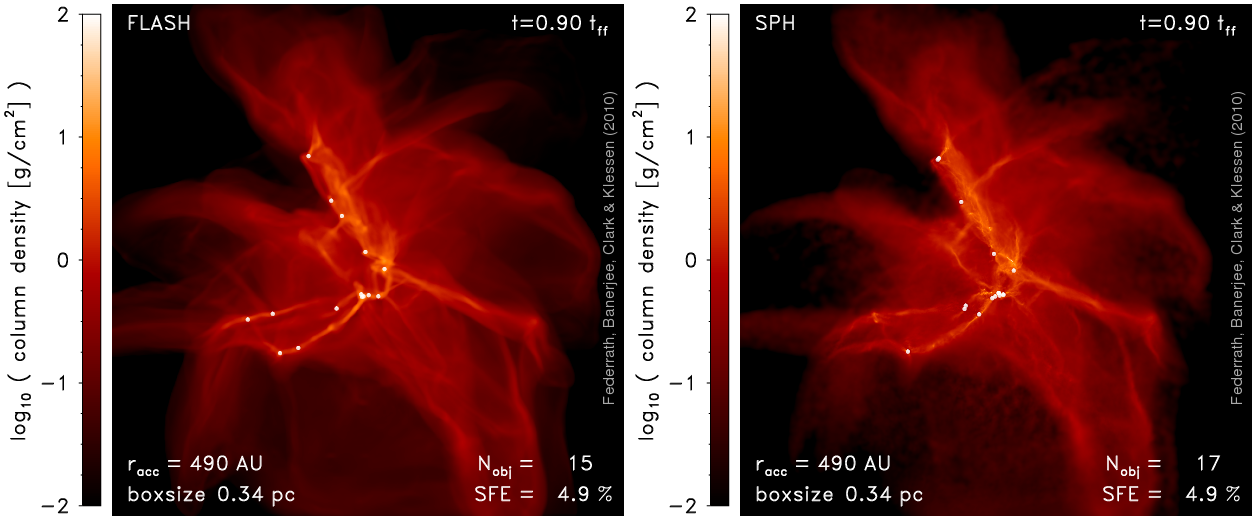
Sink particle creation checks
Checks for a bound state, gravitational potential minimum, Jeans instability and converging flows are absolutely necessary for a meaningful creation of sink particles. If those checks are switched off, many spurious sink particles are created, and the mass accreted by the sink particles is overestimated. [ 4MB mp4 ]
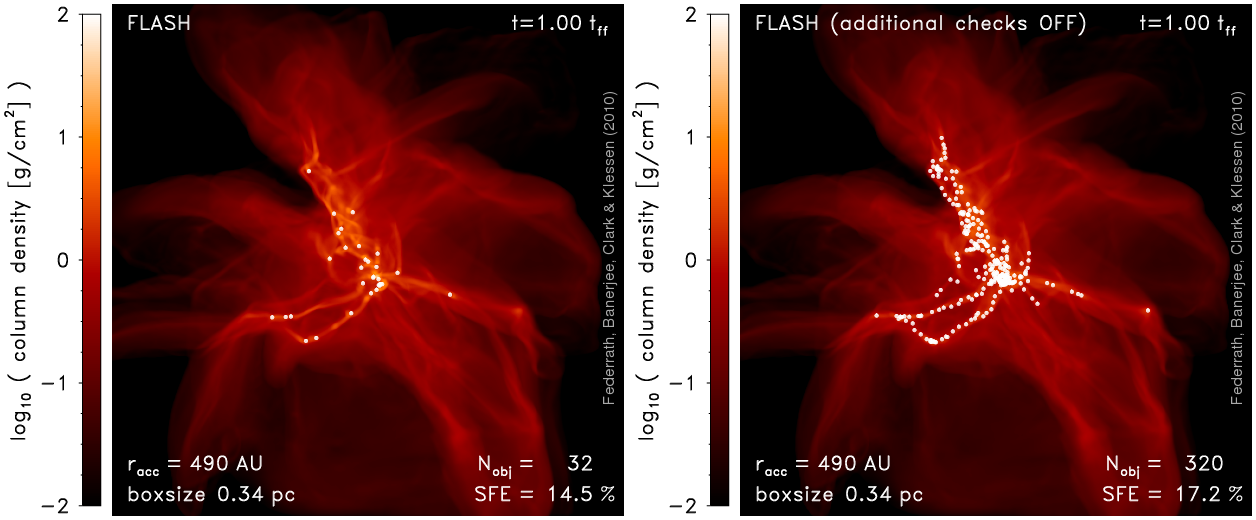
Rotating cloud core fragmentation test
This movie shows the formation and fragmentation of a thin gas disk from a rotating one solar mass cloud core. This test is also known as the Boss & Bodenheimer and Bate & Burkert tests. [ 2MB mp4 ]
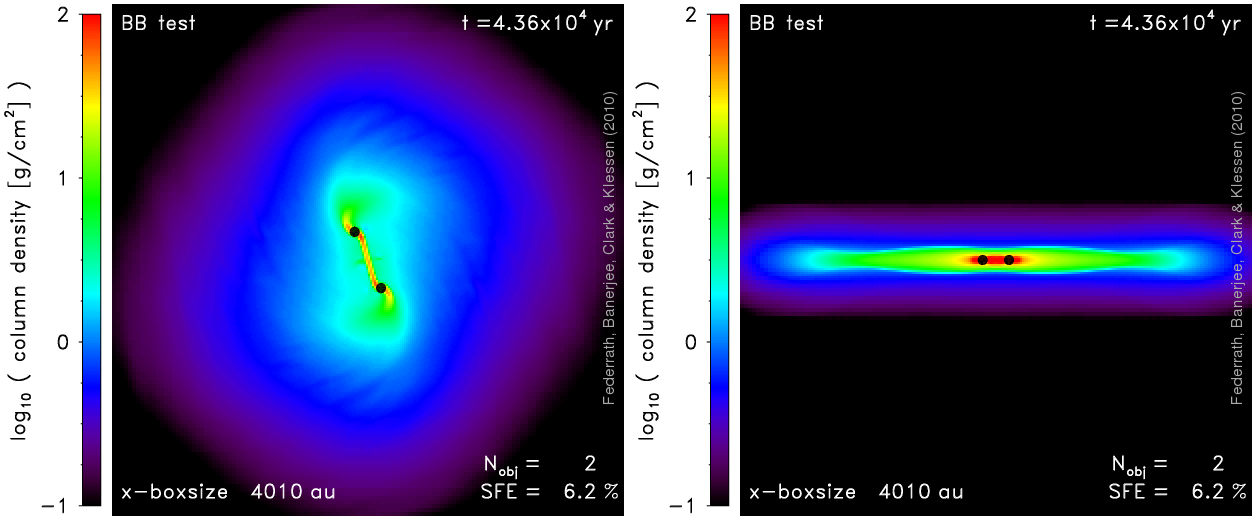
Momentum conservation test
This movie shows the collapse of a (very poorly resolved) gas cloud (0.5 solar masses) on the left, while a sink particle (0.1 solar masses) with initial momentum in positive vertical direction was placed on the right as an initial condition. The gas cloud collapses and a sink particle is formed in its center, while the other particle gets attracted by the gas cloud and goes into highly eccentric orbits. Both sink particles accrete almost all the gas very early on in the dynamical evolution. The two images below show both the momentum of the gas and sink particles in the horizontal and vertical directions, respectively. For momentum conservation to hold both gas and sink particle momenta must be symmetric about the horizontal axis. The discontinuities in the curves are caused by gas accretion events, during which momentum is also conserved. [ 18MB mp4 ]
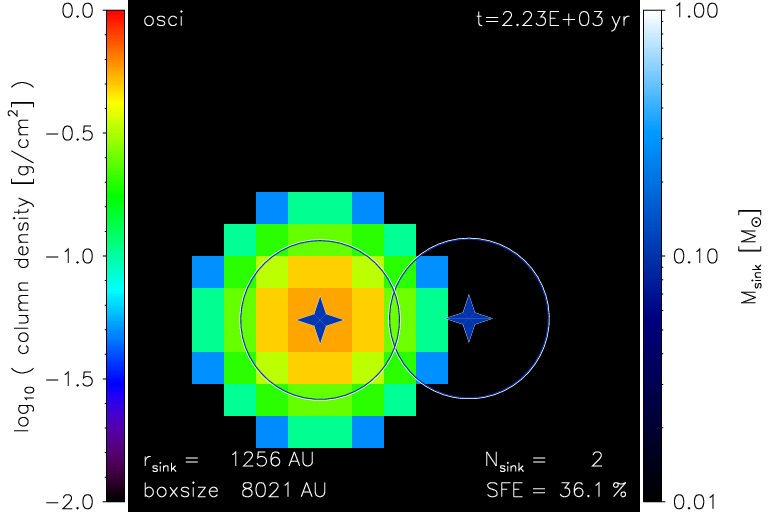
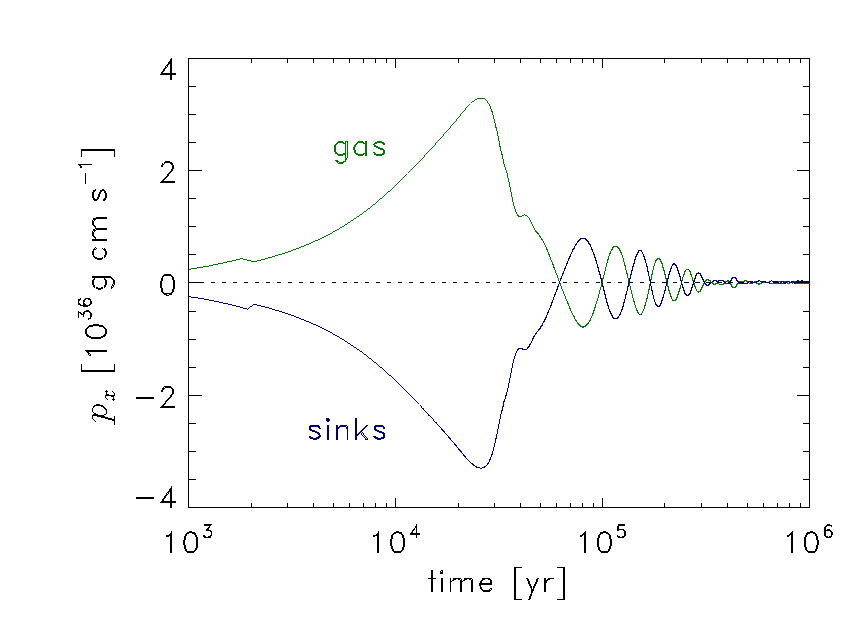
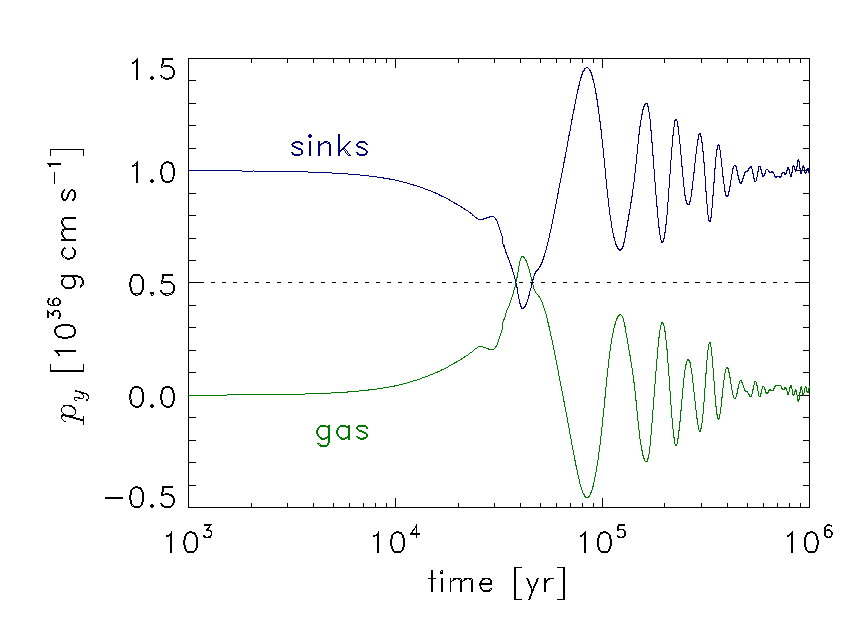
Angular momentum conservation test
This movie shows a variant of the rotating cloud core fragmentation test above. It shows the column density of the disk (face on and edge on) until 68.5% of the initial gas mass was accreted by sink particles and a total of 12 fragments have formed by that time. Below is a plot of the time evolution of the total angular momentum along the rotation axis. The angular momentum is conserved to within 0.5% for all times. [ 7MB mp4 ]
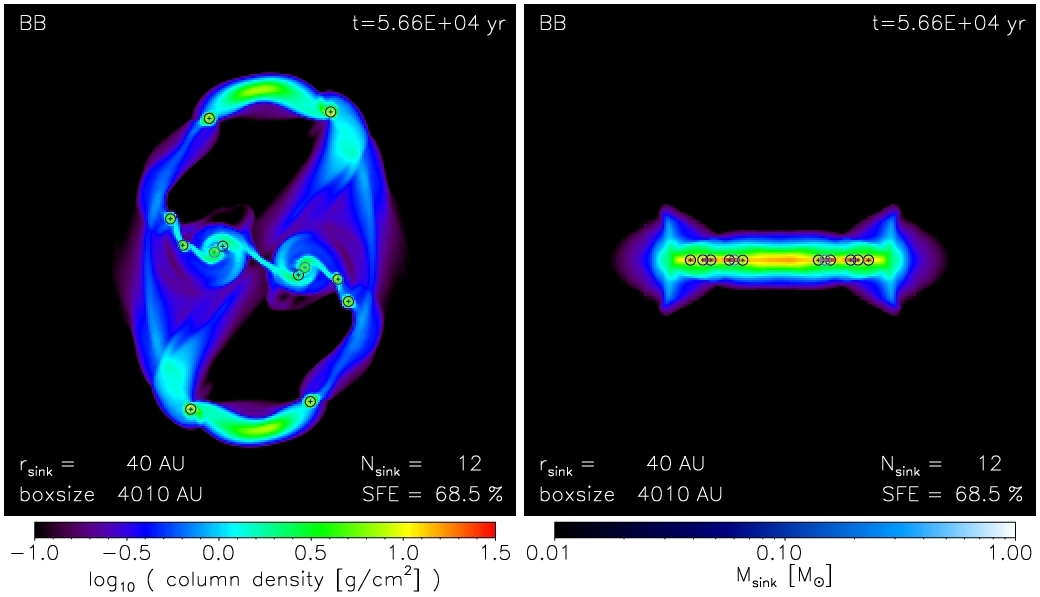
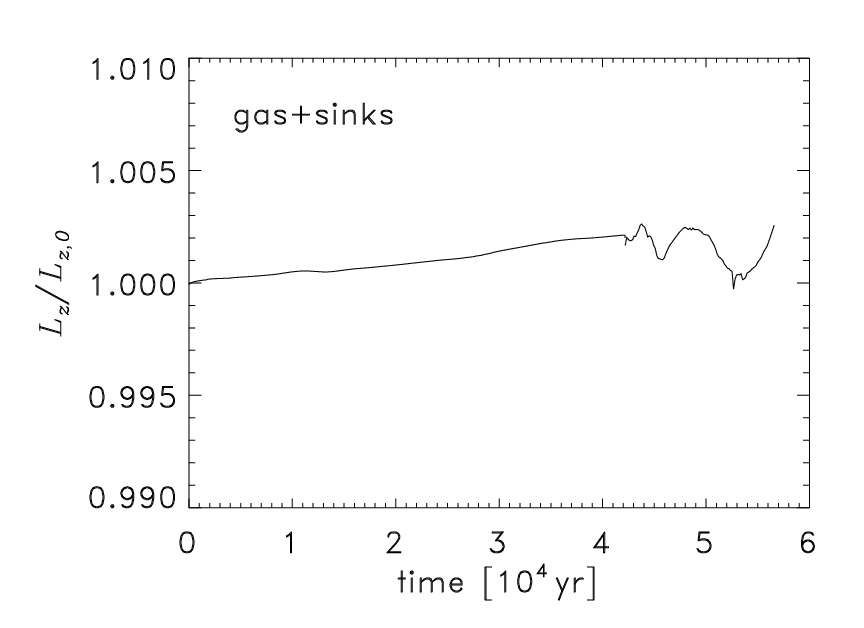

 Home
Home